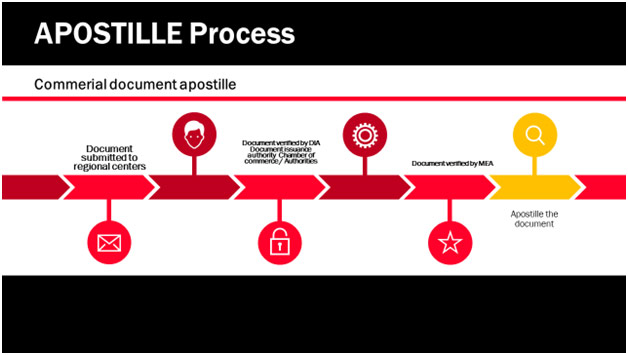How to Apostille Birth Certificate: 11 Practical Tips for Success 2024

Source: apostilecertificate.com
In an increasingly globalized world, the need to have your documents recognized internationally has never been greater. Whether it’s for employment, education, immigration, or marriage abroad, having your birth certificate apostilled is often a crucial step. An apostille is a form of authentication issued to documents for use in countries that participate in the Hague Convention of 1961. This guide provides practical tips on how to successfully apostille a birth certificate in 2024, tailored for anyone from the uninitiated to those needing a refresher.
Understanding the Apostille Process

Before diving into the intricacies of the apostille process, it’s essential to grasp its purpose and function. An apostille certifies the authenticity of the document’s signature, the capacity in which the signer acted, and, if applicable, the identity of the seal or stamp the document bears. It doesn’t validate the content of the document itself but verifies its legitimacy for use in another country. Learn more about the process behind apostille at https://www.onesourceprocess.com/.
Ensure Your Document is Eligible for Apostille
The first step in apostilling a birth certificate is to ensure that your document is eligible. Not all documents can be apostilled, and not all birth certificates are automatically qualified. For instance, a photocopy or a document notarized by a local notary may not be acceptable. Typically, the birth certificate needs to be a certified copy issued by a competent authority, such as the Vital Records Office or the Registrar of Births and Deaths in your country.
Know Your Destination Country’s Requirements
Each country that is a member of the Hague Convention may have specific requirements for apostilled documents. While the apostille ensures the document is recognized, the format or additional requirements might vary. For example, some countries might require the document to be translated, and the translation itself to be apostilled. Understanding these nuances beforehand can save time and frustration.
Obtaining a Certified Copy of Your Birth Certificate
If you don’t have a certified copy of your birth certificate or if the one you possess is old or damaged, obtaining a new one is your next step. This process varies widely depending on your country of birth. Generally, it involves applying to the relevant government office, which might be done online, by mail, or in person. Ensure that you request a copy that is eligible for apostille, which might be termed differently, such as “long form” or “full copy.”
Choose the Right Authority for Apostille
Identifying the correct authority to issue an apostille for your birth certificate is crucial. In many countries, this authority is the Ministry of Foreign Affairs or a similar government department. However, in some cases, particularly in federal systems like the United States, apostilles for birth certificates are issued by the state where the document was issued. Confirming this in advance will direct you to the right office, saving time and possibly expenses.
Preparing Your Documents
When preparing to submit your birth certificate for an apostille, ensure all required documents are in order. This might include an application form, your original certified birth certificate, and possibly a copy of your ID. Check if the authority requires the documents to be presented in a specific way, such as notarized copies or translations. Ensuring everything is correctly prepared before submission can prevent delays.
Translation Requirements
If the country where you intend to use the apostilled birth certificate speaks a different language, you might need to get the document translated. Not only does the translation need to be accurate, but the translator’s qualifications must also be recognized. In some cases, the translated document must also be apostilled separately, adding an additional step to the process.
Submit Your Application
Submitting your application for an apostille can typically be done by mail, in person, or, increasingly, online. The method you choose will depend on the issuing authority’s options and your personal circumstances. Mailing can be convenient but ensure you use a trackable service to prevent loss. Applying in person can be faster but might require an appointment. Online applications are becoming more common and can streamline the process significantly.
Processing Times and Fees

Processing times for apostilles can vary significantly from one country to another and even from one region to another within a country. It’s important to factor in this time, especially if you have a deadline. Fees for apostilling a birth certificate also vary. Ensure you know the exact cost and acceptable payment methods beforehand to avoid any surprises.
After Receiving the Apostille
Once you receive your apostilled birth certificate, review it carefully to ensure there are no errors and that it meets the requirements of your destination country. If you had the document translated, ensure the apostille is correctly attached to both the original document and the translation, if required.
Troubleshooting Common Issues
Even with careful preparation, issues can arise. Common problems include missing information, incorrect fees, or lost documents. In such cases, communication with the issuing authority is key. Keep records of all submissions and correspondence in case you need to refer to them or resubmit documents.
Stay Informed About International Changes
An additional crucial tip is to stay informed about any changes in international agreements or procedures related to document authentication. The world of international law and agreement is dynamic, with changes that could affect the apostille process or its requirements. For instance, new countries might join the Hague Convention, or existing members might change their internal procedures for accepting apostilled documents.
Conclusion

The process of getting a birth certificate apostilled can seem daunting, especially with the varying requirements and processes in different countries. However, by understanding the basics of what an apostille is, ensuring your document is eligible, and carefully following the steps required by the issuing authority, you can navigate the process successfully. Remember, preparation, attention to detail, and patience are your best allies in ensuring your birth certificate is apostilled correctly and efficiently.

 How Long Does it Take to Write a Psychological Report for Immigration?
How Long Does it Take to Write a Psychological Report for Immigration?  A Complete Guide to Personalized Gift Ideas That Carry Real Thought and Value
A Complete Guide to Personalized Gift Ideas That Carry Real Thought and Value  Neuschwanstein Castle From Munich Day Trip Guide
Neuschwanstein Castle From Munich Day Trip Guide  Oxford ─ England’s City of Dreaming Spires
Oxford ─ England’s City of Dreaming Spires  Creative Gift Ideas for Anime Lovers and Collectors: Unique Picks You Will Adore
Creative Gift Ideas for Anime Lovers and Collectors: Unique Picks You Will Adore